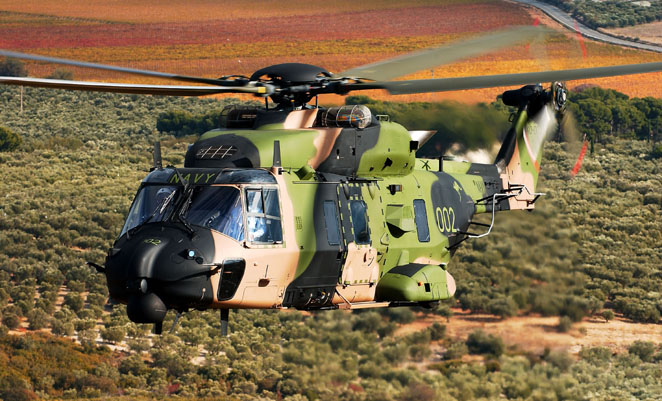
The Australian National Audit Office (ANAO) has released a damning report into the acquisition and service introduction of the NHI/Australian Aerospace MRH90 helicopter which was acquired under Project AIR 9000 Phases 2, 4 & 6.
The acquisition of the MRH90 for all three phases of the project – to acquire an additional squadron of helicopters under Phase 2, to replace the S-70A-9 Black Hawks in service under Phase 4, and to replace Navy’s Sea Kings under Phase 6 – was a key component of the ADF’s Helicopter Strategic Master Plan which sought to reduce the number of helicopter types in ADF service from nine to five, and thus realise greater training, support and sustainment efficiencies.
The report into the $4 billion project revealed that the ADF’s original recommendation to buy 12 new-build Sikorsky S-70M (UH-60M) Black Hawks for Phase 2 and up to 36 new build S-70Ms (or remanufactured S-70A-9s) for Phase 4 in June 2004 was overruled by the then Howard coalition government, despite Sikorsky’s bid being significantly cheaper than Australian Aerospace’s.

The report says the Black Hawk recommendation had the support of the Secretary for Defence, the Chief of the Defence Force, the Chief of CDG, the CEO of the DMO, the Chief of Army, and the Chief of Air Force. It said Defence’s recommendation was based on the Black Hawk’s cost advantage, its robust construction, ballistic protection and crashworthiness.
But Defence had also found that the MRH90 would also meet the capability requirement – it considered that it was better marinised for amphibious operations, and that Australian Aerospace’s bid had Australian industry capability advantages.
The report highlights “program development deficiencies and acquisition decisions during the period 2002 to 2006” as the primary causes of the difficulties experienced by the MRH90 program. It says that period included “requirements definition, the source selection process and the establishment of acquisition and sustainment contracts”, and that these crucial stages of program development were not appropriately performed, leading to “serious and potentially long‑term consequences for capability delivery and Commonwealth expenditure.” It said the the maturity of the MRH90 and S-70M Black Hawk aircraft designs had not been properly assessed.
With the acquisition of MRH90, the S-70A-9 Black Hawk fleet which was built in the 1980s was to have been withdrawn between January 2011 and December 2013. But the withdrawal didn’t commence until January 2014, and is now not scheduled to be completed until June 2018. The original project schedule called for Final Operational Capability (FOC) of 46 MRH90s to be achieved in July 2014, but this now not expected to be realised until April 2019, a delay of nearly five years.
The report says the extended concurrent operations of both the Black Hawk and MRH90 fleets has led to “significant problems for funding of Army aviation” leading to likely “compromises to levels of capability,” and also identifies the capability gap experienced by Navy since its Sea Kings were retired in 2011.
Some positives from the report include the results from a series of trials conducted aboard HMAS Choules in 2012 which showed the MRH90 has impressive handling over the deck and showed considerable potential for embarked operations. Defence says the MRH90 has shown that it has the “potential to offer greater capability in some areas than the Black Hawk and the Sea King,” and that “Defence continues to adjust operational tactics, techniques and procedures to account for the differences between the platforms.”
The report says that by March 2014 more than $2.4 billion had been spent on the program, and that 27 MRH90s had been delivered. It highlighted that the program was running more than four years behind schedule, with the first operational capability milestones for both the Army and the Navy yet to be achieved.
It said “considerable work remains to implement and verify some design changes, and to adjust operational tactics, techniques and procedures, in order to develop an adequate multi‑role helicopter capability for Army and Navy operations.” These design changes include the self-defence gun system, cabin seating and cargo hook, all of which needed to “overcome significant operational deficiencies.” It said operational test and evaluation was yet to validate any of the 11 operational capability milestones set by the Army and Navy.
The report can be read here.












